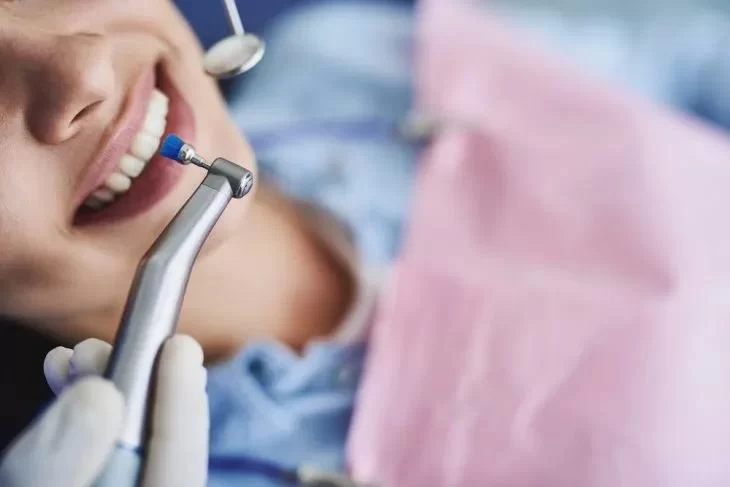
What to Expect During a Teeth Cleaning Appointment: A Complete Guide
- Step 1: Initial Consultation and X-Rays
- Step 2: The Cleaning Process
- Step 3: Polishing and Fluoride Treatment
- Step 4: After-Care Tips and Advice
Step 1: Initial Consultation and X-Rays
When you first arrive for your teeth cleaning appointment, the dentist or hygienist will likely perform an initial consultation. They’ll ask you about your oral health history, including any concerns or issues you may have noticed with your teeth or gums. This is an essential step in understanding your unique needs.
If it’s your first time visiting or if it’s been a while since your last cleaning, your dentist may take X-rays. These X-rays provide a detailed look at your teeth, gums, and bones, which helps the dentist identify any potential issues that may not be visible during a regular exam.
Step 2: The Cleaning Process
Once the consultation and X-rays are complete, the actual teeth cleaning begins. This is typically a two-part process: scaling and polishing.
Scaling involves using a special tool to remove plaque and tartar buildup from the surfaces of your teeth and beneath the gum line. Tartar, which is hardened plaque, can only be removed by a professional, and its buildup can lead to cavities and gum disease if left untreated.
During this process, the dentist or hygienist will use an ultrasonic scaler or hand tools to gently remove the tartar. You may hear a slight scraping sound, but don’t worry – this is normal, and the procedure is generally painless. If you have sensitive teeth, your hygienist may use a gentler approach.
Step 3: Polishing and Fluoride Treatment
After scaling, your teeth will be polished using a special paste. This paste is slightly abrasive and helps remove any remaining plaque while giving your teeth a smooth, shiny finish. It also helps to give your teeth a fresh, clean feeling.
Next, your dentist may apply fluoride treatment to help protect your teeth. Fluoride strengthens tooth enamel, making it more resistant to cavities. Depending on your dental needs, the fluoride treatment may be applied as a gel, foam, or varnish, and it is typically left on your teeth for a few minutes to absorb.
Step 4: After-Care Tips and Advice
Once your teeth cleaning is complete, your dentist or hygienist will provide you with after-care instructions. These tips are crucial to maintaining your oral health until your next cleaning appointment. You may be advised to avoid eating or drinking for a short period, especially if you’ve had fluoride treatment.
It’s also a good time to ask any questions you may have about your oral health. If you experience any discomfort or bleeding after the cleaning, don’t hesitate to reach out to your dentist’s office. They’ll guide you on the best course of action.
It’s important to note that regular teeth cleanings are essential to maintaining your oral health. By removing plaque and tartar buildup, you can prevent serious dental problems, such as cavities, gum disease, and bad breath. Keep in mind that your dentist may recommend cleanings every six months, but this can vary based on your individual oral health needs.
Final Thoughts: Maintain Your Smile with Regular Cleanings
Maintaining your oral health is essential, and a professional teeth cleaning appointment is one of the best ways to keep your teeth and gums in top shape. If you haven’t had a cleaning recently or if you’re due for your next appointment, now is the perfect time to schedule a visit. Regular cleanings not only give you a fresh, clean feeling but also help prevent long-term dental issues. Ensure your smile stays bright and healthy by prioritizing routine dental visits!







 River City Dentistry5.0 (329 review)
River City Dentistry5.0 (329 review) Bloomington Family Dental4.0 (298 review)
Bloomington Family Dental4.0 (298 review) ABC Dental4.0 (433 review)
ABC Dental4.0 (433 review) Paul E. Webb, DDS5.0 (11 review)
Paul E. Webb, DDS5.0 (11 review) Ascend Dental Design5.0 (362 review)
Ascend Dental Design5.0 (362 review) Arlington Family & Cosmetic Dental Associates4.0 (121 review)
Arlington Family & Cosmetic Dental Associates4.0 (121 review) The Importance of Oral Health Education During Pregnancy for a Healthy Pregnancy
The Importance of Oral Health Education During Pregnancy for a Healthy Pregnancy Best Tips for Brushing Your Teeth Properly for Healthy Gums: Essential Techniques for Oral Health
Best Tips for Brushing Your Teeth Properly for Healthy Gums: Essential Techniques for Oral Health Why Skipping Dental Checkups Can Lead to Bigger Oral Health Problems
Why Skipping Dental Checkups Can Lead to Bigger Oral Health Problems Advantages of Porcelain Dental Restorations
Advantages of Porcelain Dental Restorations How Can Diabetes Cause Tooth and Gum Problems? Preventing and Managing Oral Health Issues
How Can Diabetes Cause Tooth and Gum Problems? Preventing and Managing Oral Health Issues Healthy Habits for Promoting Good Oral Health and Hygiene: Tips for a Healthy Smile
Healthy Habits for Promoting Good Oral Health and Hygiene: Tips for a Healthy Smile